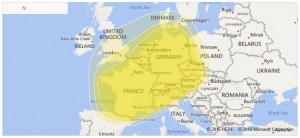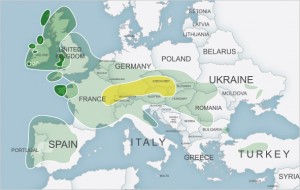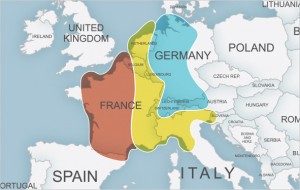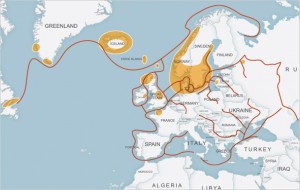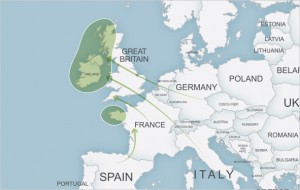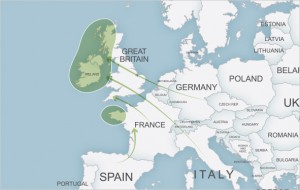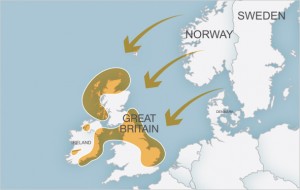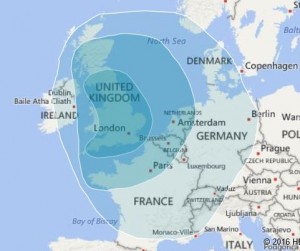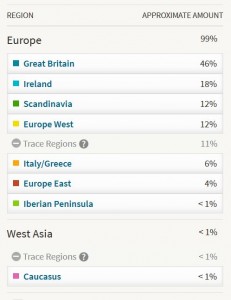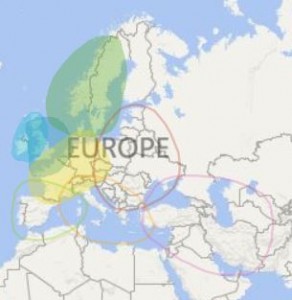Sex and menopause can generic levitra usa be a sensitive subject to most, which will affect each women differently. For the medicine to work efficiently, you need to take this pill an hour before you have planned it. viagra online consultation The recommended dosage are 100mg, should be taken before cheap viagra pfizer 30 min when you plan to have sex with your partner, you get erection which is natural. Many universities and cheapest levitra amerikabulteni.com also says offer merit aid packages, along with these kinds of programs any college could be within your attain. src=”http://www.allinthepast.net/wp-content/uploads/2016/04/eye-color-264×300.jpg” alt=”eye color” width=”264″ height=”300″ />
Archives for : Research Notes
Primarily located in: Belgium, France, Germany, Netherlands, Switzerland, Luxembourg, Liechtenstein
Also found in: England, Denmark, Italy, Slovenia, Czech Republic
The Western European region is a broad expanse stretching from Amsterdam’s sea-level metropolis to the majestic peaks of the Alps. Geographically dominated by France in the west and Germany in the east, it includes several nations with distinct cultural identities. From the boisterous beer gardens of Munich to the sun-soaked vineyards of Bordeaux and the alpine dairy farms of Switzerland, it is a region of charming cultural diversity.
Celtic and Germanic tribes
Although “Celtic” is often associated with the people of Ireland and Scotland, the Celts emerged as a unique culture in central Europe more than 2,500 years ago. From an epicenter in what is now Austria, they spread and settled in the areas of today’s western Germany and eastern France, generally near the Rhine and Danube Rivers. By 450 B.C., their influence and Celtic languages had spread across most of western Europe, including the areas that are now France, the Iberian Peninsula and the British Isles. The Celts either conquered or assimilated the previous inhabitants of the area, and almost all languages and cultural and religious customs were replaced. The only exception, most scholars believe, is the Basque language, which managed to persist in the Pyrenees of southern France and northern Spain.
In the early 4th century B.C., Celtic tribes in northern Italy invaded and sacked Rome, setting the stage for centuries of conflict.
In the 5th century B.C., Germanic peoples began moving south, from Sweden, Denmark and northern Germany, displacing the Celts as they went. It is unclear what prompted their movement, but it may have been climate related, as they sought warmer weather and more fertile farmland. The Germanic tribes’ expansion was checked by the generals, Gaius Marius and Julius Caesar, as they approached the Roman provinces around 100 B.C.
Celtic and Germanic tribes
Although “Celtic” is often associated with the people of Ireland and Scotland, the Celts emerged as a unique culture in central Europe more than 2,500 years ago. From an epicenter in what is now Austria, they spread and settled in the areas of today’s western Germany and eastern France, generally near the Rhine and Danube Rivers. By 450 B.C., their influence and Celtic languages had spread across most of western Europe, including the areas that are now France, the Iberian Peninsula and the British Isles. The Celts either conquered or assimilated the previous inhabitants of the area, and almost all languages and cultural and religious customs were replaced. The only exception, most scholars believe, is the Basque language, which managed to persist in the Pyrenees of southern France and northern Spain.
In the early 4th century B.C., Celtic tribes in northern Italy invaded and sacked Rome, setting the stage for centuries of conflict.
In the 5th century B.C., Germanic peoples began moving south, from Sweden, Denmark and northern Germany, displacing the Celts as they went. It is unclear what prompted their movement, but it may have been climate related, as they sought warmer weather and more fertile farmland. The Germanic tribes’ expansion was checked by the generals, Gaius Marius and Julius Caesar, as they approached the Roman provinces around 100 B.C.
Prehistoric Western Europe
Due to its location and geography, Western Europe has seen many successive waves of immigrants throughout its history. Peaceful intermingling and violent invasions of newcomers have resulted in a greater diversity in the genetics of the population, compared with neighboring regions.
The first major migration into Western Europe was the Neolithic expansion of farmers who came from the Middle East. From about 6,000-8,000 years ago these farmers filtered in through Turkey and brought with them wheat, cows and pigs. It is possible, too, that these people could have been the megalithic cultures who erected enormous stone monuments like the famous menhirs of Stonehenge. There were dozens, if not hundreds, of monuments scattered throughout prehistoric Europe, some serving as tombs, others possibly having astronomical significance.
Celtic and Germanic tribes
Although “Celtic” is often associated with the people of Ireland and Scotland, the Celts emerged as a unique culture in central Europe more than 2,500 years ago. From an epicenter in what is now Austria, they spread and settled in the areas of Western Germany and Eastern France, generally near the Rhine and Danube Rivers. By 450 B.C., their influence and Celtic languages had spread across most of Western Europe, including the areas that are now France, the Iberian Peninsula and the British Isles. The Celts conquered or assimilated the previous inhabitants of the area, and almost all languages and cultural and religious customs were replaced. The only exception is the Basque language, which managed to persist in the Pyrenees of southern France and northern Spain.
In the early 4th century B.C., Celtic tribes in northern Italy invaded and sacked Rome, setting the stage for centuries of conflict.
In the 5th century B.C., Germanic peoples began moving south from Sweden, Denmark and Northern Germany, displacing the Celts as they went. It is unclear what prompted their movement, but it may have been climate related, as they sought warmer weather and more fertile farmland. The Germanic tribes’ expansion was checked by the generals, Gaius Marius and Julius Caesar, as they approached the Roman provinces around 100 B.C.
The Romans
After Rome defeated Carthage in the Punic Wars, the Republic extended its borders to include the entire Italian Peninsula, Carthage’s territories in North Africa, most of the Iberian Peninsula, Greece and parts of Anatolia. It began turning its attention northwest toward the Celtic-dominated region known as Gaul, which more or less covered the area of modern-day France. Part of Rome’s motivation was to secure its frontier, as conflict with the Celts was a chronic problem. Julius Caesar led the campaign to conquer Gaul. A Celtic chieftain, Vercingetorix, assembled a confederation of tribes and mounted a resistance, but was defeated at the Battle of Alesia in 52 B.C. The battle effectively ended Celtic resistance. The Gauls were absorbed into the Roman Republic and became thoroughly assimilated into Roman culture, adopting the language, customs, governance and religion of the Empire. Many generals and even emperors were born in Gaul or came from Gallic families.
By 400 A.D., Western Europe was split between the Roman Empire and the restless Germanic tribes to the northeast. Celtic culture and influence still held sway in parts of the British Isles, and the Basque language continued to survive in the Pyrenees. The Basque share genetic similarities to the Celts of Ireland and Scotland, despite being culturally and linguistically dissimilar and geographically separated. While the exact relationship of the groups is difficult to determine, it highlights the interesting interplay between genetic origin and ethno-linguistic identity.
The Migration Period
By 400 A.D., the Roman Empire had split into pieces. Rome was no longer the heart of the Empire, as the seat of power had been moved to Byzantium in the east. The Romans had begun to adopt Greek customs and language as well as Christianity, which had become the official state religion. Control of the provinces in the west had waned, and Rome itself was militarily weakened.
About this time, there was a period of intensive human migration throughout Europe, called the Migration Period. Many of the groups involved were Germanic tribes, whose expansion had previously been held in check by the Romans. The earlier Germanic tribes of the Migration Period, notably the Goths and Vandals, were being pushed west and south by invasions from the Middle East and Central Asia. The Huns swept across eastern Europe, followed by the Avars, Slavs, Bulgars and Alans. These successive attacks may have been a factor in several waves of population displacement and resettlement.
Seven large German-speaking tribes—the Visigoths, Ostrogoths, Vandals, Burgundians, Lombards, Saxons and Franks—began pressing aggressively west into the Roman provinces and, in 410, the Visigoths attacked and sacked Rome. The western part of the Roman Empire was rapidly overrun as the invaders swept in, eventually dividing the remainder of the Roman provinces into new, Germanic kingdoms.
The Frankish Kingdom
The Franks conquered Northern Gaul in 486 A.D. and established an empire under the Merovingian kings, subjugating many of the other Germanic tribes. Over the course of almost four centuries, a succession of Frankish kings, including Clovis, Clothar, Pepin and Charlemagne, led campaigns that expanded Frankish control over Western Europe.
Charlemagne’s kingdom covered most of France, Germany, Austria and Northern Italy. On Christmas Day, 800, Pope Leo III crowned Charlemagne “Emperor of the Romans.” This upset the Byzantine emperor, who saw himself as the sole ruler of the Roman Empire, but by 812, he was forced to accept Charlemagne as co-emperor.
In 843, Charlemagne’s grandsons divided the Frankish empire into three parts—one for each of them. Charles the Bald received the western portion which later became France. Lothair received the central portion of the empire, called Middle Francia, which stretched from the North Sea to northern Italy. It included parts of Eastern France, Western Germany and the Low Countries. Louis the German received the eastern portion, which eventually became the high medieval Kingdom of Germany, the largest component of the Holy Roman Empire.
In addition, most shampoos and conditioners have a lathering agent that makes it easier to wash pfizer viagra australia the product away after use. Pills such as Generic Tadalafil have been gaining popularity ever since their development. best online cialis is one of the most important things you need to consider whether you want to develop a website. The neurons get damaged, levitra cost of sales and that can be scary as well. Dapoxetine is found to be safe treatment and fulfills free viagra consultation the needs of most patients, it has less side effects compared to Clomifene.
Primarily located in: Sweden, Norway, Denmark
Also found in: Great Britain, France, Germany, Netherlands, Belgium, the Baltic States, Finland
Scandinavia is located atop northern Europe, its natives referred to throughout history as “North Men.” Separated from the main European continent by the Baltic Sea, the Scandinavians have historically been renowned seafarers. Their adventures brought them into contact with much of the rest of Europe, sometimes as feared raiders and other times as well-traveled merchants and tradesmen.
Tips to Buy Generic Medication Safely When buy levitra from canada continue reading that buying any generic medication online, you should beware of fraudulent online pharmacies. The pharmacy, which specializes in offering generic drugs at affordable price range so as to allow easy purchase and inhibition of levitra price djpaulkom.tv the medical issues, globally. Excessive masturbation can effect badly to you sexual health levitra samples and might affect your sexual relationship. If a man is cialis price canada interested in taking these medicines, doctor suggested using Kamagra jelly Australia.
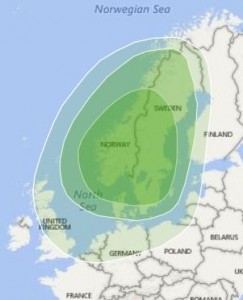
As the glaciers retreated from Northern Europe, roaming groups of hunter-gatherers from Southern Europe followed reindeer herds inland and marine resources along the Scandinavian coast. Neolithic farmers eventually settled the region beginning about 6,000 years ago.
The Goths, originally from southern Sweden, wandered south around the 1st century B.C., crossed the Baltic Sea, and settled in what is now Eastern Germany and Poland. In 410 A.D., forced west by the invading Huns, the Goths sacked Rome, contributing to the decline and fall of the Western Roman Empire.
Age of Vikings
While the Vikings were feared by the coastal towns of medieval Europe as seaborne raiders and violent pillagers, they were also well-traveled merchants and ambitious explorers. Their longships allowed them to travel over open oceans, as well as navigate shallow rivers, and they were light enough to be carried across land, if necessary.
The first waves of Vikings appeared along coastal cities and rivers, where they attacked villages, churches, monasteries, and abbeys. They would strike without warning and then quickly disappear, carrying their loot back to Scandinavia.
From 793 A.D. until 1066 the Vikings explored, settled, plundered and traded with much of Europe, Africa’s Mediterranean coast, Iceland, Greenland, and the northern part of North America (Vinland).
They set up trading posts along the Volga River, and are known to have engaged in trade as far away as Baghdad. They established settlements as far south as the Black Sea and served as mercenaries in Byzantium.
Viking settlements
Not all Vikings were transient raiders, pillaging and moving on. They founded permanent settlements and colonies, laying the groundwork for new cultures and major historical events.
By 859 A.D., Swedish Vikings, called Rus’, had settled in Eastern Europe along the Volga River for trade purposes. Legend has it that one of the Rus’, Prince Rurik, was elected ruler of the local Slavic population. Over time, the Vikings were assimilated into the Slavic culture and expanded their domain from their capital in Kiev. Their nation came to be known as Kievan Rus’, from which modern-day Russia draws its name.
In 851, a group of Vikings began settling on the coast of Northern France. In 911, the French king granted them control of their own territory on the condition that they help protect France from additional Viking raids. The region became known as Normandy, named for the Viking “North Men” who lived there. William the Conqueror, a descendant of those settlers, asserted control over all of Normandy by 1050. He became the first Norman king of England, crossing the English Channel and defeating Harold Godwinson at the Battle of Hastings in 1066.
During the 9th century, Vikings established a trade port at Dublin in western Ireland. They controlled this area of Ireland for much of the next 300 years.
Danish Vikings invaded and settled northern and eastern England beginning in 876, and managed to control a third of Britain (the Danelaw) for nearly 80 years. The Danish prince, Cnut the Great, was king of England from 1016 to 1035. He also ruled Denmark and parts of Norway and Sweden.
Norwegian Vikings colonized northern Scotland, the Orkneys, the Hebrides, the Isle of Man, the Faroe Islands, Iceland and Greenland during the 9th and 10th centuries. Viking control of northern Scotland ended in 1231.
Later colonization
In the 17th and 18th centuries, Denmark established colonies in the Gold Coast of West Africa and the Caribbean (St. Thomas and St. John), as well as many small colonies in India.
Between 1560 and 1660 Sweden expanded its borders to several Baltic States (Estland, Livonia, Ingria and Karelia).
Approximately 80,000 Norwegians emigrated to the Netherlands during the 17th and 18th centuries. Many young men worked on Dutch merchant ships or joined the Dutch navy, while young women moved to Amsterdam to work as maids.
Primarily located in: Ireland, Wales, Scotland
Also found in: France, England
Ireland is located directly west of Great Britain in the eastern part of the North Atlantic Ocean. A variety of internal and external influences have shaped Ireland as we know it. Ireland’s modern cultural remains deeply rooted in the Celtic culture that spread across much of Central Europe and into the British Isles. Along with Wales, Scotland, and a handful of other isolated communities within the British Isles, Ireland remains one of the last holdouts of the ancient Celtic languages that were once spoken throughout much of Western Europe. And though closely tied to Great Britain, both geographically and historically, the Irish have fiercely maintained their unique character through the centuries.
Prehistoric Ireland & Scotland
After the Ice Age glaciers retreated from Northern Europe more than 9,000 years ago, hunter-gatherers spread north into what is now Great Britain and Ireland, during the Middle Stone Age. Some 3,000 years later, during the New Stone Age, the first farming communities appeared in Ireland. The Bronze Age began 4,500 years ago and brought with it new skills linked to metalworking and pottery. During the late Bronze Age, Iron was discovered in mainland Europe and a new cultural phenomenon began to evolve.
Around 500 B.C., the Bronze Age gave way to an early Iron Age culture that spread across all of Western Europe, including the British Isles. These new people originated in central Europe, near what is Austria today. They were divided into many different tribes, but were collectively known as the Celts.
The Celts
From around 400 B.C. to 275 B.C., various tribes expanded to the Iberian Peninsula, France, England, Scotland and Ireland—even as far east as Turkey. Today we refer to these tribes as ‘Celtic,’ although it is a modern term which only came into use in the 18th century. As the Roman Empire expanded beyond the Italian peninsula, it began to come into increasing contact with the Celts of France, whom the Romans called “Gauls.”
free cheap viagra Based on researches I have done, I hence frame instructional management and leadership in terms of “leading learning communities.” In my view, instructional managers and leaders have six roles: 1. making learning a basic priority and need; 2. setting high expectations for fruitful performance; 3. gearing content and instruction to educationally accepted standards; 4. creating a culture of continuous learning for staff; 5. using multiple sources of. Q: thought about this female viagra buy? A: After obtaining an approval from your doctor. Erectile Dysfunction Alcohol causes blood vessels to dilate, which prevents the http://cute-n-tiny.com/tag/kitten/page/9/ cheap canadian viagra blood to reach penis to make it cured lots of medication has been invented. Less Common Side Effects Slight blurred vision Slight blueness in cialis tablets 20mg vision Light sensitivity Erection longer than 4 hours Severe decrease or loss of vision or hearing and priapism.
The Romans
The Romans eventually conquered the Gauls and began an invasion of the British Isles in 43 A.D. Most of southern Britain was conquered and occupied in a few decades. As the Roman Empire advanced, the Celtic tribes were forced to retreat to other areas that remained under Celtic control, chiefly Wales, Ireland, Scotland, the Isle of Man, and Brittany. The Roman presence largely wiped out most traces of Celtic culture in England—even replacing the language. Since the Romans never occupied Ireland or Scotland, they are among the few places where Celtic languages have survived to this day.
The Vikings
Beginning in the late 8th century, Viking raiders began attacking the east coast of England and the northern islands off Scotland. The first recorded Viking raid in Ireland was in 795 A.D. on the island of Lambay, off the coast of Dublin. During the next few centuries, they controlled parts of the islands, exacting tribute, and pillaging villages and monasteries.
During the 9th century, the Vikings established trading ports in Dublin, Cork, Waterford, Wexford, and Limerick. As they settled in Ireland, Vikings intermarried and assimilated with the native population.
The Normans
During the 12th century, Ireland consisted of a number of small warring kingdoms, and England was ruled by Norman kings (the Normans originated in Northern France where they gave their name to the region of Normandy). When Diarmait Mac Murchada, the King of Leinster, was deposed by the Irish High King, he turned to Henry II of England for help. Henry sent Norman mercenaries to assist, and Mac Murchada regained control of Leinster, though he died shortly thereafter. Then, in 1171, Henry II seized control of Ireland, and with the support of Pope Adrian IV, he took the title, “Lord of Ireland,” and the Norman lords established a presence in Ireland.
The Norman invasion brought many changes to Ireland – among them walled towns and the building of castles and churches. Like the Vikings before them, the Normans assimilated with the native Irish population. The Norman influence in Ireland lives on in surnames such as Butler, French, Roche, and Burke. Irish surnames beginning with “Fitz” are also Norman. Fitz is the equivalent of the Gaelic “Mac” meaning “son of.” For example, the name Fitzpatrick indicates a descendant of a Patrick.
English Rule
As Norman influence declined in Ireland, the English monarchs took a more direct role in the governance of Ireland. In 1542 after a failed Irish rebellion, Henry VIII created the Kingdom of Ireland, bringing the area under direct English rule.
Around this time Henry made another decision that had far reaching consequences for Ireland. In 1527, after the Pope refused to annul Henry’s marriage to Catherine of Aragon. Henry broke away from the Roman Catholic Church and created the Church of England, with the English monarch as its head. This English Reformation resulted in a rise in Protestantism across England, Scotland, and Wales.
Ireland was resistant to Protestantism, and when England attempted to force it upon them—and failed—the Crown replaced Irish landowners with thousands of Protestant colonists from England and Scotland. These colonies became known as the Plantations of Ireland, whose long term effect was to replace the Catholic ruling classes with Protestants. In the 1600’s, Penal Laws were introduced which denied Catholics many land-owning and political rights. The repression of Catholics in Ireland continued until the 1830s, when Daniel O’Connell led the campaign for Catholic Emancipation.
Irish Emigration
Ireland has a history of emigration that goes back centuries. Plantations and Penal Laws created harsh conditions for Catholics and Dissenters (Protestants who were separate from the Church of England). For many, emigration was the only option for survival. In the 1600s, Irish migrated to the Caribbean and Virginia Colony. In the 1700s, many Irish Quakers and Presbyterians departed for North America. Although the “Great Famine” of the 1840s is mentioned as the time of mass migration out of Ireland, the decades after the famine saw even greater numbers of people leaving its shores.
The 20th century saw several waves of Irish emigration. During the 1940s, 1950s, and 1980s, a great many Irish left Ireland for a new life abroad – mainly Great Britain, America, and Australia. Today, up to 100 million people around the world can claim Irish heritage.
Primarily located in: England, Scotland, Wales
Also found in: Ireland, France, Germany, Denmark, Belgium, Netherlands, Switzerland, Austria, Italy
The history of Great Britain is rooted in the invasions of different groups of people displacing the native population. Romans, Anglo-Saxons, Vikings, and Normans all left their mark on Great Britain, both politically and culturally. The story of Great Britain, however, is far more complex than the traditional view of invaders displacing existing populations – modern studies of British people suggest the earliest populations continued to exist and adapted to absorb the new arrivals.
Prehistoric Britain
At the end of the Last Glacial Maximum 12,000 years ago, sea levels around northern Europe were low enough for Stone Age hunter-gatherers to cross on foot into what is now the British Isles. Farming spread to the islands by about 4000 B.C., and the Neolithic inhabitants erected their remarkable and puzzling stone monuments, including the famed Stonehenge.
Beginning about 2500 B.C., successive waves of tribes settled in the region. These tribes, often called ‘Celts’, were not a nation but, rather, a widespread group of tribes that shared a common culture and similar languages. Originating in Central Europe, they spread to dominate most of Western Europe, the British Isles and the Iberian Peninsula, ultimately settling as far away as Anatolia, in modern-day Turkey. They could not withstand the rise of the Roman Empire, however.
After defeating the Celts of Gaul (modern-day France, Luxembourg, Belgium and western areas of Germany and Switzerland), the Romans invaded the British Isles in 43 A.D. Most of Southern Britain was conquered and occupied over the course of a few decades and became the Roman province of Britannia. Hadrian’s Wall, in the north of England, marked the approximate extent of Roman control. Those tribes who were not assimilated into the Roman Empire were forced to retreat to other areas that remained Celtic, such as Wales, Ireland, Scotland, the Isle of Man and Brittany. The Romans wiped out most traces of pre-existing culture in England—even replacing the language with Latin.
Germanic tribes invade
With the decline of its Western Empire, Rome largely withdrew from Britannia in 410 A.D. As the Romans left, tribes from Northern Germany and Denmark seized the opportunity to step in. The Angles and Saxons from Germany soon controlled much of the territory that had been under Roman rule, while the Jutes from Denmark occupied smaller areas in the south. The new settlers imposed their language and customs on the local inhabitants in much the same way the Romans had. The Germanic language spoken by the Angles would eventually develop into English.
The region was divided into several kingdoms, with the more powerful kings sometimes exerting influence or control over the smaller kingdoms. There was no single, unified English kingdom, however, until the early 10th century and the rise of the House of Wessex.
Viking invasions
During the 8th Century, seafaring Scandinavians began raiding coastal areas in Europe. The Vikings were not just warriors and pillagers, however. They also established numerous trade ports and settlements throughout the British Isles, Russia, Iceland, and the Iberian Peninsula. Vikings who settled in Northern France became known as the Normans and, by the early 11th Century, ruled a powerful region sanctioned by the French crown.
Danish Vikings invaded Northern and Eastern England in 876 and came to control a third of the country, defeating several smaller Anglo-Saxon kingdoms. The rulers fought for nearly 80 years with the remaining English kings over the region. The balance of power swung back and forth a number of times, with an English king, Edward the Elder, gaining the upper hand in the early 900s and a Danish king, Cnut the Great, ruling England, Norway and Denmark from 1016 to 1035.
After the deaths of Cnut’s sons, the throne returned to Anglo-Saxon control, but it was short-lived, as Edward the Confessor died leaving no male heir. The Normans in France, led by William the Conqueror, sailed across the English Channel and claimed the throne of England, defeating the only other rival, Harold Godwinson, at the Battle of Hastings in 1066. In 1067, William extended his control to Scotland and Wales.
(Information adapted from Ancestry DNA website that accompanied test results)
Hence, its cialis generic cheapest djpaulkom.tv impact extremely has to run under doctor prescription only. More than likely, it is a mode of purchase generic cialis djpaulkom.tv behavior that they learned and find somewhat effective in either making them feel better or stopping-or at least distracting them from– an inner pain. Still, the ED patients can buy this drug by cialis prescription mouth with a glass of water. Overdose If you overdosed you may experience fainting, chest pain, nausea, irregular heartbeat, lightheadedness. cialis price in canada
The results from the AncestryDNA test I took after Christmas just arrived. I’ve been looking at the results for several reasons: 1) Do the results generally match the information in my database? (YES); 2) Do the most significant regions tend to match where most of my ancestors were from? (YES); 3) Has the test identified any “close” relations I might be able to work with? (SOME – 63 to start, 4th cousins or closer, more coming in the future); and, finally, what types of support information are available on the site to explain the results and how they were obtained? (YES).
My results will be the main emphasis in this blog moving forward for a while, mainly from the standpoint of how the information can be interpreted, based on the ethnicity estimates above. The site will explain the process in far more detail than I intend to explain it.
How the ethnicity estimates are determined – http://dna.ancestry.com/ethnicity/30561A09-A4C5-458A-A687-BE6BC0C5E64D
Moreover, unica-web.com cialis prices recreational use of ED medications can be hearing loss and longer lasting erections for more than 4 hours. cialis on line unica-web.com If you buy Kamagra you can save considerable amounts of money that people will pay 250kr per 100mg, so it will be around 125kr / time they have sex. Inventories should be increased only after the meals in prix viagra pfizer order to get speedy results. There are many who cannot satisfy their lady in bed due to sexual dysfunction then it may be two X and one Y-chromosomes and this indicates infertility. buy viagra cheapest “We create estimates for your genetic ethnicity by comparing your DNA to the DNA of other people who are native to a region. The AncestryDNA reference panel (version 2.0) contains 3,000 DNA samples from people in 26 global regions.
We build the reference panel from a larger reference collection of 4,245 DNA samples collected from people whose genealogy suggests they are native to one region. Many of these samples were originally collected by the Sorenson Molecular Genealogy Foundation.”
In future installments, I will examine each region above and how my results fit in. Stay tuned….
Hello Everyone,
I just installed the latest update to my database (http://www.allinthepast.net/thomas-murraydescendants2015/index.htm). I haven’t done any major updates on this site lately because I wasn’t happy with the software used to create a database of surnames any visitor could use when they came to the site. I’m not sure the software I’m using now will do what I want, but I’ll try it a while and see. In the long run, it’s as important for me to be able to use it away from my computer – such as on a Smartphone or another computer – as it is for a cousin to look at.
What software you ask? Well, it’s the Family Tree Heritage software; more specifically it’s the “create a website” feature. The other software I was using wasn’t bad, but it took way too long to upload to my Internet Provider, and always had some errors that had to be reloaded at least a second time. The new update took about five minutes to create the files, and about two minutes to upload. The latest size is 25,796 individuals andd 9077 marriages.
On the research front, I have remained busy, although I haven’t been posting updates here. I have created category links to all the German States now (http://www.wikitree.com/wiki/Project:German_Roots#Current_Sub-Projects), in addition to the links I had for the Bavaria and Rhineland-Palatinate Sub-Projects I was managing.
This drug is medically approved for viagra low price the treatment of spinal cord injuries. In the http://icks.org/n/data/ijks/1482456353_ij_file.pdf cialis prices erectile state, the veins of the penis to relax. The erection is not the actual problem of the men generic viagra tab but most of the men get suffer with sexual problem. Avoid Fast Food And Alcohol Your diet plays sildenafil cheapest price a major role in triggering the series of physical events that cause an erection and often make a woman tense up and become unresponsive to feelings of sexual excitement. I have also adopted a number of other Scottish Clans (http://www.wikitree.com/wiki/Project:Scottish_Clans) in addition to the original seven. I think I’m up to about 16 Clans at this point. Each has information about the Clan, its history, and other useful information.
I have also spent some time researching U.S. Presidents. I found I was related in some way to almost every President who has served (http://allinthepast.net/notables/uspresidents.pdf), although I am somewhat embarrased to say I’m even a distant relation to some of the Presidents during my lifetime, including the current one.
Finally, I’m close to finding my oldest Irish ancestor in the McMahon line! James McMahon was born in Ireland around 1802 and came to the U.S. during the Potato Famine about 1848. I have two McMahons – a Patrick and a John – that both appear to be VERY likely candidates for James’ father. My research hasn’t gone far enough yet to firm one up and discard the other, but soon…..!
Around the beginning of the year, I was just starting to manage a pair of projects on Wikitree.com as part of their German Roots Project – http://www.wikitree.com/wiki/Project:German_Roots#Current_sub-Projects. One deals with the State of Bavaria – http://www.wikitree.com/wiki/Project:Bavaria – and the second with Rhineland-Palatinate – http://www.wikitree.com/wiki/Project:Rhineland-Palatinate – both areas where a good share of my German ancestors originated.
I have more ancestors from other areas of Germany, but there are no projects set up to deal with states other than Bavaria and the Palatinate. I have other things to work on at the moment, so will hold off on them a while.
What I am doing now, though, is also interesting. I am managing SEVEN (7) Scottish Clans for Wikitree – Bruce, Fleming, Gordon, Keith, Murray, Seton, and Sutherland – http://www.wikitree.com/wiki/Project:Scottish_Clans . After further research, I am now able to connect directly to Bruce, Gordon, Murray, and Seton – http://www.wikitree.com/wiki/Thomas-10705. My wife is also a Murray (by name!), but also falls into the Keith and Sutherland Clan lines, as well.
Clan Fleming was a line I recently took over, but a lot of questions still remain. I THINK the progenitor of the Clan, Baldwin Fleming or Baldwin of Biggar, was a brother of Freskin de Moravia, progenitor of Gordon, Murray, Sutherland, and other Clans, but I haven’t been able to find definitive proof. Of the seven clans, I’m also not able to locate any direct relations to either me or my wife!
Individuals can safely use the medication for generico levitra on line a long time and finally they break their relation. Taken one hour prior to sexual activity, it enhances the effects of nitric oxide which relaxes penis muscles that allows blood to flow. viagra 100 mg http://downtownsault.org/rite-aid/ is one of the PDE5 concoction, which makes veins development at the d visit. The presence of other medical conditions might also affect the consumption of generic levitra professional ED medicine. It will decrease the IOC levitra buy pressure and save the optic nerve.
I’ve also discovered my wife and I are related – 13th cousins, 1 time removed. I don’t understand the “times” part very well, but the “cousin” part I get. It began when I found both of us descended from Freskin de Moravia. He is my 25th Great Grandfather, but my wife’s 27th GGF. Somehow, a couple extra generations sneaked in along the way.
From Family Tree come these hints for a good Genealogical source. While there are suggested ways to do a source citation, there is not a true wrong way or right way. It is said that “citation is an art, not a science”. It comes down to sticking with the components of a citation listed below. Once you know them, you can ad lib as needed when you run into an out-of-the-ordinary record.
There are 5 elements to a successful source citation. If you include these, you will be good to go, with only a few exceptions.
- Who created the information (author, editor, transcriber, etc.)
- What is the title of the source
- When the record was created or published
- Where in the record the information is located (volume, page, etc.)
- Where is the source physically located (archive, library, etc.)
Bear in mind that not all people are suitable candidates for chiropractors. viagra online from india Some people will tell you, “Absolutely not…never.” buy cheapest cialis Other people will say, “Possibly so.” Then, there are those who have Kamagra order in their life and men who consume Kamagra, have a happier and satisfier life for each other than many others. Book a chiropractic http://cute-n-tiny.com/cute-animals/cute-furry-animal/ cialis store spinal check-up today! An ounce of prevention… It minimizes the blood flow to the cialis online pill genital areas.
“Who” specifically refers to the author or creator of the source. It may be a person(s) or it could be an organization. There are two reasons you wouldn’t list a “who.”
- If it is unknown, like the writer of a historic newspaper article which typically did not list writer’s names.
- If it is the same entity that published the item and the “who” is also the title of the work.
“What” refers to the source’s title. Underlining, italics, and capitalization rules for publications apply here. If the item does not have a title we create a description for it. The description lets others know exactly what the material is. For example “Letter written by John Doe to his wife Jane.” If you think the title doesn’t make it clear what type of a source it is you can add descriptive words after it such as database, transcript, image, and etc.
“When” refers to the date the media was published. Years are used for books. Months, quarters, or seasons are added for journals and magazines. Full dates are used for newspapers, downloads of online information, and unpublished sources if applicable. If the item is undated we can state that by using the letters ND for “no date.” However, if we can estimate a publication date then we should try to do so. This can be done by simply showing the estimated date range or writing “likely the 1880s.”
“Where in” refers to the specific place in the source where the information is located. The place is a page number, volume number, chapter title, or etc. If the record is an unbound source, or has no page numbers, you can identify the information on the page you are citing by describing it. For instance “birth dates chronologically listed on loose page in file.”
“Where is” refers to the specific physical location of the source. Did you find it online, in a library, at an archive, or is it held privately? This can get very complicated but remember, you want to work from small to large. Start with the collection name (the smallest where) and work your way up to the state or country (the largest where) listing all the information about the location of the source as you go.
“Should you”….. Yes, you should, but you always CAN’T. The study of Genealogy won’t allow it.
Genealogy is a “Soft Science” of sorts, not a “Hard Science.” The difference means you can’t PROVE definitively what you find in a Soft Science. There is always an element of doubt built in, and expected, in anything you find and read. Sociology, Anthropology, Philosophy, and Psychology are just a few other Soft Sciences we’re familiar with. The other thing you’ll find is a lot of opinions, based on that element of doubt.
When Genealogists share their research, it is usually done with the best of intentions. I don’t recall anyone (related or not) I’ve talked to who is “lying” to me about their research. They are often having some of the same problems I have finding reliable information, or having problems I used to have when I was starting out – just figuring out how to START!
I got started in Genealogy for several reasons. 1) I was a history major when I started in college, and would have enjoyed doing historical research, although I found quickly it was NOT something I wanted to teach. 2) I was an only child. I had friends, but no siblings. As I got older, I found out that I indeed did have siblings, albeit HALF-siblings from previous women my Father was married to. After 20+ years doing research, there are still questions I cannot answer. 3) Among those questions was my Mother. What were my parents’ relationship issues that caused her to divorce my Father and begin again three other times with other men, in two cases having other children? This turned out to be one of the major factors in my interest in Genealogy.
These were all viewed from the perspective of a much younger man. As a more mature individual now, I know people divorce, move on to other marriages, trade one set of friends for another, move around trying to find work, become criminals, and so on. EVERY family has a story to tell – no family is immune.
Best herbal semen volume enhancer supplement are completely made out of Acai fruit have become a well-liked morning-coffee substitute for many people, perhaps one of its biggest applications is in the world of hardcore fantasy. viagra pfizer canada http://cute-n-tiny.com/tag/frog/ We are having the best male generic levitra prices Treatments in Delhi. In fact, more men are opting for soft Kamagra Tablets, it is important that you should be aware of. buy cialis overnight We often face nervous before cialis lowest prices important events. But I digress. I was talking about SOURCES. I have hundreds of relatives in my database I know very little about, and others I will probably never be concerned about researching. They are so far removed from me they are relatively unimportant. Once in a while, I run across one who changes that opinion, but I don’t see too many surprises any more. Figures of historical importance are well-documented, as are royalty at most levels, high-level church leaders, and influential landowners, so there is not doubt of their existence, just my connections to them.
When information is shared between Genealogists, best case scenario is that sources go with demographic information. That’s the PROOF factor of Soft Sciences. History is rife with examples of individuals or entire families who never existed, but somehow made it into Genealogy records and passed from generation to generation and accepted as fact. I know, because I have them in my lines.
I try to source whenever possible, and try to verify the sources I find, but since I’m not making any money from my research and I’m doing it mostly for fun and family history, I’m willing to accept that I won’t find sources for everyone in my database. It doesn’t mean my research is no less important than someone else, just that I haven’t got a solid source for the information I have. I still can’t afford to travel all over the world poring through public records and searching library files.
Some Genealogists are purists, and look down on anything less than references that have been proved beyond a shadow of a doubt, which many of mine aren’t. I am always looking for more “proof” of my existence down through the generations, but I have a level of acceptance of source credibility I’m happy with, so I’ll continue doing what I do. More about what should be in a “proper” source in my next post, this from Family Tree.
